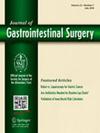Optimal treatment strategies for borderline resectable liver metastases from colorectal cancer
IF 2.2
3区 医学
Q3 GASTROENTEROLOGY & HEPATOLOGY
引用次数: 0
Abstract
Background
Traditionally, colorectal liver metastases (CRLMs) are divided into “initially resectable” and “initially unresectable.” The terminology “borderline resectable” continues to be elusive without any common consensus or definition. This narrative review aims to decode the conundrum of “borderline resectable CRLM (BR-CRLM)” and to discuss optimal treatment strategies.
Methods
A comprehensive review was performed using Medline/PubMed and Web of Science databases with a search period ending on January 1, 2024. Using PubMed, the terms “CRLM,” “BR-CRLM,” and “management of BR-CRLM” were searched.
Results
The 2016 European Society for Medical Oncology guidelines defined the term “resectability” in CRLM using the “technical (surgical) criteria” and the “oncologically criteria.” These 2 criteria form the basis of defining BR-CRLM. Thus, BR-CRLM can be either technically easy but with unfavorable oncologically criteria or technically difficult with favorable oncologically criteria. Although defining BR-CRLM by incorporating both these criteria seems to be the most logical way forward, there is currently a lot of heterogeneity in the literature. It is generally agreed upon that some form of chemotherapy needs to be administered in BR-CRLM before embarking on surgery. Conversion chemotherapy is used in patients with BR-CRLM in which there is a possibility of resection after effective downsizing. Along with improved effective chemotherapy, great strides have been made in pushing the limits of surgery to achieve resectability in this subset of patients.
Conclusion
Advanced surgical techniques and locoregional liver-directed therapies coupled with perioperative chemotherapy with or without targeted therapy have made long-term survival benefit, a reality in patients with BR-CRLM. Thus, the time has come to recognize “BR-CRLM” as a distinct entity.
结直肠癌边缘可切除肝转移灶的最佳治疗策略
背景:传统上,结直肠肝转移瘤(CRLM)分为 "初步可切除 "和 "初步不可切除 "两种。边界可切除 "这一术语仍然难以捉摸,没有任何共识或定义。这篇叙述性综述旨在破解 "边界可切除CRLM(BR-CRLM)"这一难题,并讨论最佳治疗策略:方法:使用 MEDLINE/PubMed 和 Web of Science 数据库进行全面综述,检索期截至 2024 年 1 月 1 日。使用PubMed,以 "CRLM"、"BR-CRLM "和 "BR-CRLM的管理 "为关键词进行检索:2016年欧洲肿瘤内科学会(ESMO)指南使用 "技术(手术)标准 "和 "肿瘤学标准 "定义了CRLM的 "可切除性"。这两个标准是定义 BR-CRLM 的基础。因此,BR-CRLM 既可以是技术上容易但肿瘤学标准不利的,也可以是技术上困难但肿瘤学标准有利的。虽然结合这两个标准来定义 BR-CRLM 似乎是最合理的方法,但目前的文献中还存在很多异质性。人们普遍认为,BR-CRLM 患者在开始手术前需要进行某种形式的化疗。转化化疗用于在有效缩小后有可能进行切除的 BR-CRLM 患者。在改进有效化疗的同时,我们还在突破手术极限以实现对这部分患者的切除方面取得了长足进步:结论:先进的外科技术和局部肝脏导向疗法,加上围手术期化疗(无论有无靶向治疗),已使BR-CRLM患者的长期生存获益成为现实。因此,现在已经到了将 "BR-CRLM "视为一个独特实体的时候了。
本文章由计算机程序翻译,如有差异,请以英文原文为准。
求助全文
约1分钟内获得全文
求助全文
来源期刊
CiteScore
5.50
自引率
3.10%
发文量
319
审稿时长
2 months
期刊介绍:
The Journal of Gastrointestinal Surgery is a scholarly, peer-reviewed journal that updates the surgeon on the latest developments in gastrointestinal surgery. The journal includes original articles on surgery of the digestive tract; gastrointestinal images; "How I Do It" articles, subject reviews, book reports, editorial columns, the SSAT Presidential Address, articles by a guest orator, symposia, letters, results of conferences and more. This is the official publication of the Society for Surgery of the Alimentary Tract. The journal functions as an outstanding forum for continuing education in surgery and diseases of the gastrointestinal tract.

 求助内容:
求助内容: 应助结果提醒方式:
应助结果提醒方式:


